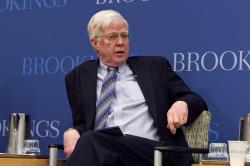ABSTRACT
In recent years, discussions between the governments of China and the United States have centered on each country’s external imbalances, large trade surpluses for China and deficits for the United States, and the need for structural reforms to achieve more sustainable patterns of growth in future years. This paper argues that reductions in external imbalances suggest that some restructuring has occurred. However, a more detailed examination of economic developments within each country offers less basis for optimism. China has experienced a large appreciation of its real exchange rate and an external surplus less than half that of the years preceding the global recession. However, the domestic counterpart has been even-higher rates of investment as opposed to lower rates of saving and a more sustainable growth of public and private consumption. For the United States, a reduction in the external deficit has been associated with an extreme contraction of domestic investment rather than increased saving. It is noteworthy that the economic trade between the two countries has become even more unbalanced than in the years before the recession, and the bilateral deficit now accounts for two-thirds of the U.S. global current account deficit.
The concluding section argues that further reduction in the trade deficit through the expansion of U.S. exporting capabilities is critical to its future performance. The section discusses policy changes that would slow the process of shifting production facilities out of the United States and promote improved export competitiveness. Those measures include further devaluation of the dollar, reform of corporate taxation, and increased investments in education and physical infrastructure.




